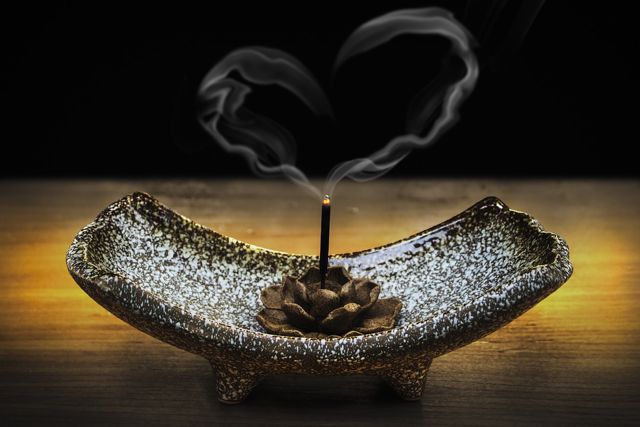
In the course of just a single conversation, so much can get stirred up inside of us that words seem to flow from us automatically without much conscious choice. And sometimes we control our speech so much that it stops being authentic.
By Catherine L. Schweig
Words are powerful. The world is in need of kind, honest, spiritually purposeful, loving words that aim to nourish and enhance all life around us.
What we say, to whom we say it, the manner in which we say it, the time and place in which we say it, and the feelings and intentions behind what we express all affect the quality of our lives and those around us. Ancient spiritual traditions recognized this. For this reason, they each left us teachings outlining the value of being mindful of our words so that we can create a positive impact with conscious speech.
Our speech patterns and communication styles (either of repression or expression) reflect psychological conditioning we are often unaware of. In Eastern traditions, these deep impressions are called samskaras, and they often unconsciously color our speech. It is difficult to remain sensitive to others during a conversation when we are unaware of everything that is automatically animating our own tongues. It is easy to say hurtful things, even—and perhaps especially—to those we love.
In the instructive Bhakti text called the Upadeshamrita, speech is listed first among six other forces in our bodies that are most difficult to tame, including the force of: our minds, of anger, of our tongues, of hunger, and of our sexual appetites. This ancient text, composed by Rupa Goswami, highlights the connection between the way we speak, and the way we live. Our style of communication is, after all, often a reflection of our lifestyles. When our lifestyles align with spiritual principles, like ahimsa (causing no harm), it becomes easier for us to create non-harmful communications as well.
Practicing a life of introspection—or the cultivation of deep self-awareness—is at the heart of developing peaceful, conscious speech. This is what Arjuna did at the start of the essential yoga text the Bhagavad Gita: he became a witness to all that was stirring within him. So, taming the tongue is really about becoming aware of the personalities behind our words. From an Eastern perspective, our personalities are collections of identities we have been gathering for lifetimes! These identities feed our consciousness, forming our ahamkara, or sense of self.
In Sanskrit, ahamkara literally means, “I am acting,” which refers to how we behave in any given situation.
Thoughts, beliefs and, feelings precede our behaviors; together, they form our persona. Sometimes we act peacefully; at other times we do not. While, ideally, many of us wish we were perfectly peaceful people at all times—having mastered the virtue of “perfect speech” outlined in Buddhism’s Noble Eightfold Path—the reality is that most of us haven’t. So, before we engage our ahamkara with others around us, it is recommended that we step back and become an objective witness to ourselves. This becomes an extremely helpful discipline when choosing our words.
In the course of just a single conversation, so much can get stirred up inside of us that words seem to flow from us automatically without much conscious choice. And sometimes we control our speech so much that it stops being authentic.
For example: perhaps our speech is reactive because something the other person said triggered us. Or maybe it is fueled by assumptions produced by our own unconscious projections. It could be that fear of being hurt prevents us from opening up in a conversation, making us sound guarded. Or perhaps our penchant for politeness compromises the sincerity in our words, making us sound untrustworthy to others. Maybe we speak in scripts, trying to sound the way we think we’re supposed to sound as peaceful, enlightened people. The more tuned in we become with what fuels our speech, the more we begin to move toward authentic, harmonious communications.
But even after we tune in and make deliberate efforts to be better communicators, the struggles continue: holding our tongues while attempting to practice tolerance may often lead to resentments. Not confronting others in the name of humility can create passive aggressive behaviors. Stuffing our upset feelings in an effort to show kindness can lead to repression.
Needless to say, well-intended individuals in spiritual Sanghas around the world quickly discover that trying to act and speak like a peaceful person is not the same as actually being one.
The Gita cautions us against such repression. Instead, it proposes that we take an honest look at where we are today, and start from there without judging ourselves (or others) harshly. In the Bhakti tradition, speech is typically divided into four types:
- Sattvic: harmonious, well-informed, illuminated, peaceful, truthful speech represented by the color white.
- Rajasic: agitated, motivated, passionate, sometimes ill-informed speech represented by the color red.
- Tamasic: disharmonious, ignorant, hurtful, darkened speech, represented by an absence of color.
- Krishna-katha: enlightened speech that contains the power to heal, inspire and nourish our spiritual cores, ultimately granting liberation.
Throughout the day—depending on what kind of day we’re having—many of us cultivating a spiritual practice will automatically alternate between the first two types of communication (sattvic and rajasic), or a combination of them while hopefully leaning more toward the sattvic side. Then we may reserve special times of the day in which to deliberately develop the forth type of speech, or “enlightened speech.”
In the Bhakti and Buddhist traditions, enlightened speech is nourished by the disciplines of reading sacred texts, chanting mantras, and listening to others doing the same—preferably those senior to us in practice, such as our mentors, teachers, bhikkhus, acharyas, gurus, etc. We also pay careful attention to avoid participating in any kind of speech or dialogue that may threaten our practice.
When our speech strays far too often from our goals, Eastern traditions sometimes prescribe extreme disciplines of withdrawing all speech while we devote ourselves to introspective work. In Sanskrit texts, a speech-fast is referred to as mauna-vrata. That means that one takes vows of silence for a certain period of time and focuses on deepening meditation practices. Silent retreats have gained much popularity in both yoga and Buddhist communities over the last ten years as more and more people commit to practicing loving-kindness to others. Needless to say—but I will anyway—this temporary renunciation of speech is not to be compared with giving another person the “silent treatment,” which is in direct opposition to loving-kindness.
There are many ways in which we can hurt others by either withholding or engaging speech. In the Noble Eightfold Path outlined in Buddhist texts, speech that eclipses our spiritual vigor is includes, “Falseness, maliciousness, harshness, and idle chatter.” Abstaining from such destructive ways of communicating with each other also reflects the first two yamas of the yoga traditions: ahimsa—the principle of not causing any harm—and satya, the principle of honesty and integrity.
Should we feel ourselves straying from non-hurtful, honest speech (and it often happens in the blink of an eye when our buttons have been pushed, or our emotional triggers set off), ancient masters recommend that we pause, take a deep breath, and bring awareness to what’s happening inside of us. Developing sensitivity to the battles within us increases our effectiveness in peacefully engaging with the uncomfortable “battles” or interactions going on outside. Learning to use our speech in beneficial ways has the potential to be incredibly healing and invigorating! After experiencing this over and over again, we wonder why we’d let ourselves speak hurtfully ever again.
Catherine L. Schweig has practiced yoga in the Bhakti tradition since 1986. Her regular treks into nature and relationships with others are a valuable part of her spiritual journey. Passionate about inspiring women to honor their voices, in 2012 Catherine founded the Journey of the Heart: Women’s Spiritual Poetry Blog, through which emerged four anthologies, the latest titled GODDESS: When She Rules (Golden Dragonfly Press, 2018). Catherine is also the creator of the Vaishnavi Voices Poetry Project. As co-founder of The Secret Yoga Institute, with her life partner, Graham M. Schweig, Ph.D., she designs yoga workshops and publishes in various yoga magazines, and co-authored Yoga in the Gita: Krishna & Patanjali, The Bhakti Dimension, (Golden Dragonfly Press, 2016). Catherine lives in Virginia with her partner, and their cat, where she also makes vegan, Waldorf-style dolls. You may connect with Catherine on Facebook, email her or visit her website: catherineschweig.com
Photo: Pixabay
Editor: John Lee Pendall
Were you inspired by this article? You might also like:
Comments
- Zen Buddhism and the Blues - April 5, 2024
- Escaping from Jehovah’s Witnesses through a Buddhist Path - March 24, 2024
- Getting to Know Holly Herring - February 29, 2024




